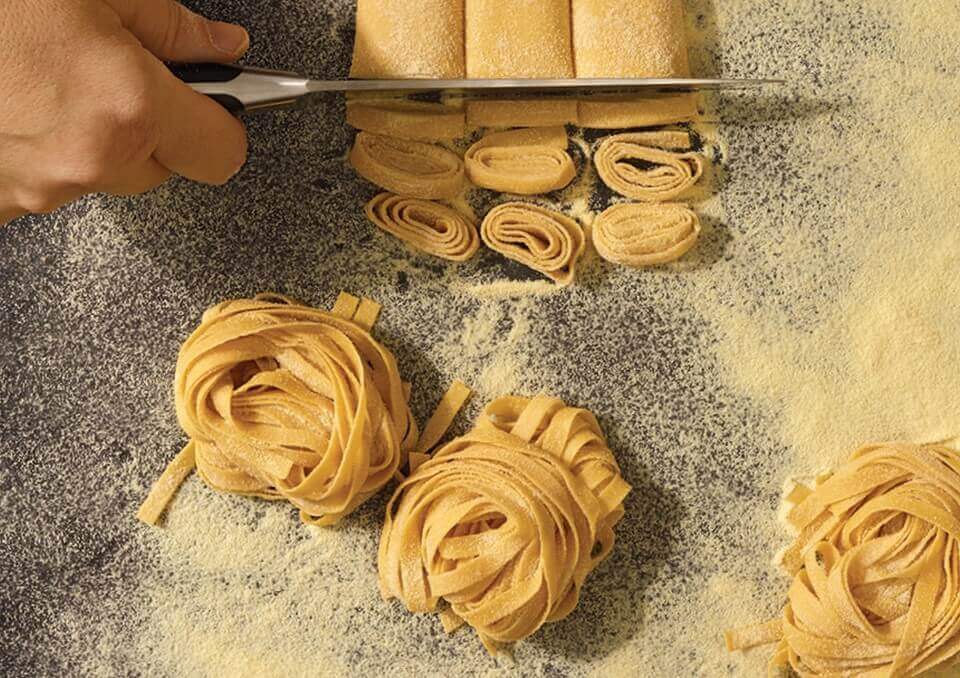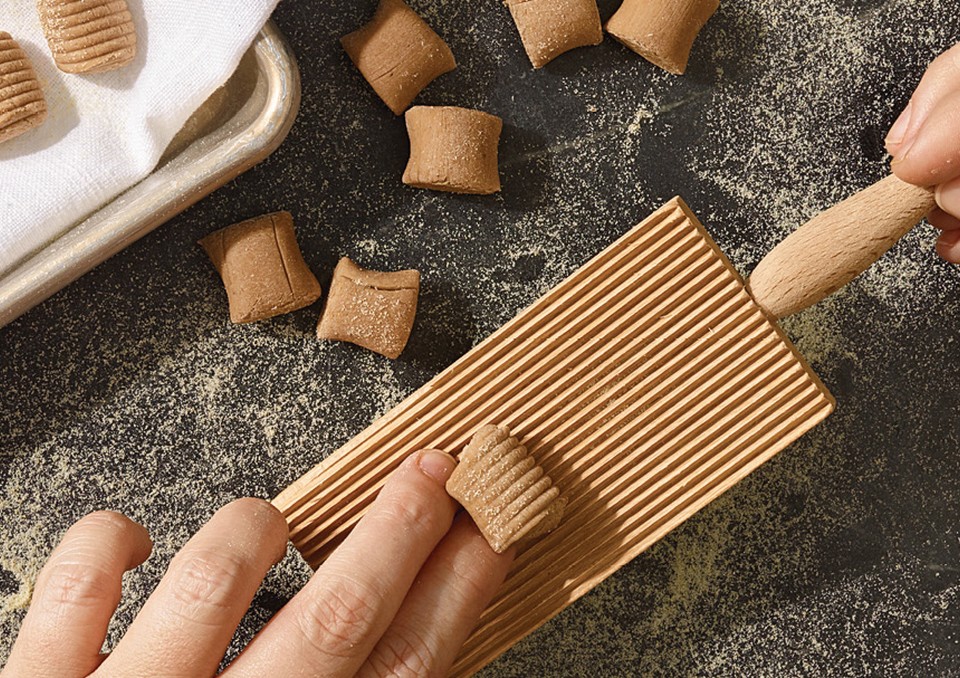
I’ve been making pasta from scratch since I was a young girl. I got my start at my mother’s side, helping her to roll out golden ribbons of fettuccine, shape and seal ravioli, and roll fat little nuggets of dough down the tines of a fork to create cavatelli.
Even now, decades later, making pasta is one of my favorite pastimes, a satisfying weekend project that still gives me a feeling of accomplishment—not to mention something delicious to eat with my family.
I’ve always used my mom’s recipe—a mix of finely milled Italian 00 flour (or unbleached all-purpose flour) and semolina (durum wheat) flour—to make my basic pasta dough (see more on these flours below). Recently, however, I’ve begun playing with the standard recipe, substituting whole-grain and heritage flours for some, or sometimes all, of the white flour.
With a growing number of specialty stone-ground flours now available on supermarket shelves and online, it seemed a natural evolution in my pasta-making. I now regularly incorporate farro, rye, and whole-wheat flours, among others, into my pasta dough.
These alternative flours have a great deal to offer. The stone-ground milling process means that they retain more nutrients than industrially processed flours. They also have more character. Stone-ground whole wheat has an appealing aroma of late-summer grass, and farro flour contributes notes of chocolate.

My current go-to flour for silky egg fettuccine is a blend of soft white Sonora wheat, a heritage North American grain, and drought-tolerant blue beard semolina. White Sonora can be milled as finely as traditional Italian 00 soft wheat flour, which makes it perfect for pasta, but it also has a rich, almost toasty flavor that reveals itself when the pasta is cooked.
When deciding on shapes and sauces, I let the characteristics of the flours be my guide. The heartiness of stone-ground whole wheat is just right for haphazardly shaped maltagliati cooked in a nourishing vegetable and bean soup; alluring farro cavatelli are clearly meant to be tossed in a rich meat sauce; and rustic ribbons of rye pappardelle call out for an earthy porcini mushroom ragù.
And finally, what better sauce for those buttery fettuccine than a creamy white pesto of pine nuts and walnuts bound together with fresh ricotta?

Semolina and 00 are the two most commonly used flours in pasta-making. Semolina has a pale gold color and a coarse texture. It’s the ingredient that, along with water and salt, is used to make commercial dried pasta, such as Barilla and DeCecco. But what is it? Essentially, semolina is a type of flour made from durum wheat, the hardest type of wheat, high in gluten-forming protein.
When grains of durum wheat are ground, they splinter like glass, resulting in semolina. In Italy, semolina that is milled a second time, to a somewhat finer grind, is known as semola rimacinata. Pasta makers in southern Italian regions such as Puglia use semolina or semola rimacinata to make sturdy shapes such as cavatelli and orecchiette.
By contrast, in northern regions, such as Emilia-Romagna—home to golden egg tagliatelle and delicate stuffed tortellini—the choice is 00 flour. This soft-wheat, lower-protein flour can be milled to a powdery fineness. The 00 refers to the size of the mesh milling screen used to produce the fine flour.
Many home pasta makers use a blend of both semolina and 00 flours. Semolina has an important second function in pasta-making: It’s used to dust the work surface as well as freshly rolled sheets of pasta. Semolina’s coarse grind acts like ball bearings, preventing fresh noodles from sticking and clumping.